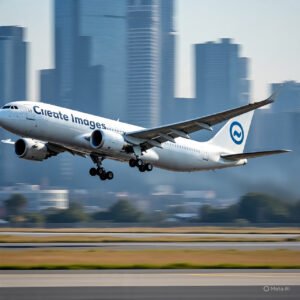The Architecture of Aerial Affordability
Engineering uncompromised luxury in international air travel—at a fraction of the cost.
1) The Architecture: From Price-Taker to Strategy-Maker
The Architecture of Aerial Affordability: Engineering Uncompromised Luxury in International Air Travel at a Fraction of the Cost The prevailing narrative around saving on international flights is a story of sacrifice: enduring agonizing layovers, flying at ungodly hours, cramming into the last row near the lavatories, and forfeiting every semblance of comfort and convenience. This conventional wisdom is not only flawed but fundamentally unnecessary. The true secret, a paradigm known only to a sliver of savvy travelers, is that the global airline industry is not a monolithic pricing entity but a fragmented, dynamic, and often illogical marketplace whose inherent inefficiencies can be systematically exploited not to find a cheap fare, but to engineer one, all while securing the legroom, service, and schedule of a premium experience. This is not about hunting for discounts; it is about understanding the underlying architecture of airline revenue management, the geopolitical nuances of air sovereignty, and the psychological triggers of consumer booking behavior, then positioning yourself as the beneficiary of this complex system. The goal is to dissociate the cost of your ticket from the value of your experience, achieving a state of “aerial arbitrage” where you fly in comfort that belies the paltry sum you paid. This methodology requires a shift from being a passive price-taker to an active strategist, leveraging tools, timing, and a overlooked economic concept known as “fare construction” to your absolute advantage.
2) Pillar One: Fare Construction & Hidden-City Logic
The first pillar of this strategy moves far beyond simply using incognito mode or setting price alerts. It involves a deep, structural exploitation of “hidden-city” and “throwaway” ticketing, not through risky guerrilla tactics, but by understanding how airlines price point-to-point travel versus multi-segment itineraries. Major carriers often charge significantly less for a flight with a connection in your desired destination than they do for a direct flight to that same city, because they are competing with budget airlines on that longer route. The key is to use sophisticated ITA Matrix software or expert-level Google Flights commands to deconstruct these routes, identifying instances where your target city is a layover point, not the final destination. To avoid the pitfalls of checked luggage and the (overblown) fears of airline retribution, you book this as a one-way ticket, ensuring you carry on your baggage, and simply disembark at your connection point. The return journey is booked separately using the same principle from the origin city. This alone can save thousands on transcontinental and transoceanic routes, but it requires a precise, fearless approach to booking. The second, and perhaps most powerful lever, is the strategic manipulation of currency and geographic pricing disparities. Airlines adjust their fares based on the purchasing power and competitive landscape of the country from which the purchase is made. A business-class seat from Istanbul to New York may be priced radically differently when sold in Turkish Lira on the Turkish version of an airline’s website versus in Euros on the German site. By employing a virtual private network (VPN) to simulate your location in a country with a favorable economic position or a weaker currency, and pairing it with a credit card that does not charge foreign transaction fees, you can access a entirely different—and often drastically cheaper—pricing inventory that is invisible to users in your home country. This is not a loophole; it is a fundamental feature of globalized commerce, and it is entirely legal and ethical.
3) Pillar Two: Timing, Points, and Post-Booking Power Plays
Furthermore, the uncompromising aspect of this approach demands a masterful application of timing, not in the simplistic “book on a Tuesday” sense, but in understanding the airline’s release schedule for award and premium inventory. The single biggest savings hack for luxury travel is not paying cash for it at all; it is using points and miles. However, the expert move is not earned through credit card sign-up bonuses alone, but through the targeted purchase of points during massive sales from airlines like Air Canada (Aeroplan) or British Airways (Executive Club), which frequently offer 100-150% bonuses on point purchases. By calculating the cost per point and comparing it to the cash price of a business class ticket, you can often “buy” the miles needed for a $10,000 ticket for less than $2,000, effectively creating an 80% discount on premium cabin travel. This is the ultimate form of paying less without getting less—you are, in fact, getting more. Finally, the true non-compromise comes from post-booking strategies: using free online tools to automatically rebook yourself if the fare drops (services like Pruvo or Google Flights’ tracking can alert you, and many airlines in North America allow free cancellation within 24 hours, while others may offer travel credit for the difference), and strategically selecting flights on aircraft known for superior cabins (like Qatar’s Qsuites or Singapore Airlines’ latest A350s) rather than just the cheapest option. This holistic approach—combining geographic arbitrage, inventory manipulation, strategic points acquisition, and technological vigilance—transforms you from a mere passenger into a master conductor of the global aviation orchestra, orchestrating a symphony of savings that delivers a first-class experience at an economy price, without a single compromise on time, comfort, or convenience. You are not finding a deal; you are architecting one.
© آپ کی ویب سائٹ — VIP پوسٹ لیآؤٹ (HTML + CSS). اگر آپ چاہیں تو میں اسی اسٹائل کو WordPress Gutenberg/Elementor بلاک میں بھی تبدیل کر سکتا/سکتی ہوں۔







